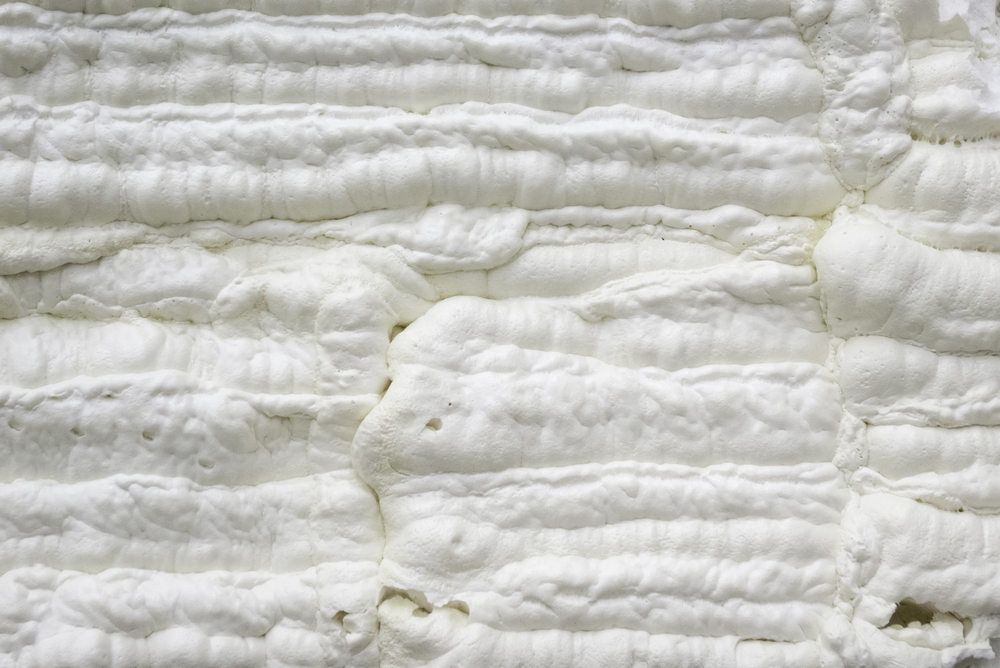Spray foam insulation is an easy, inexpensive way to insulate both your hot water and cold water pipes. Spray foam insulation is sprayed onto a surface wet where it sticks and expands as it dries.
Spray foam is used to seal around hot water pipe perforations through materials like wood, metal, and masonry. Uninsulated hot water pipes allow the water to cool before reaching its destination, causing unnecessary water and energy use.
When your hot water pipes are not insulated, the user tends to run more hot water than they actually need. Often, the user runs the water longer as the extra heat eventually warms the pipe, but the water used until the pipe warms is literally money down the drain.
Here we will answer a few common questions surrounding the use of spray foam around hot water pipes and offer a few pro tips for doing the project yourself.
Is It Safe To Use Spray Foam Around Hot Pipes?
Spray foam is safe to use around your hot water pipes to keep the water inside the pipe warm. However, professionals recommend using closed cell spray foam around hot water pipes instead of open cell spray foam, due to its superior resistance to fire.
Closed cell spray foam is more dense than open cell, so you need less of it to achieve the same R value. Generally, open cell spray foam is more appropriate for sealing openings in wood framing and masonry due to its greater expansion.
Will Using Spray Foam On Hot Water Pipes Cause a Fire?
In a typical setting, neither closed cell or open cell foam will cause a fire when installed on hot water pipes. The common fear among homeowners is that the spray foam will retain too much of the heat from the water and ignite the foam surrounding the hot water pipes.
To be clear, both closed cell and open cell spray foams are flammable. However, in a residential setting, a normal hot water heater is incapable of producing enough heat to melt or ignite the cured foam. The heat will dissipate after entering the hot water pipe, so the water can only become cooler before reaching its destination.
Are There Advantages to Using Spray Foam Around Hot Pipes?
Adding any insulation to your hot water pipes will lower both your energy costs and your water usage. Spray foam is especially effective for insulating hot water pipes because it helps reduce noises caused by water hammer and loose hangers.
Heat Loss Reduction
The heat loss incurred between the water heater and the end user will be significantly decreased by adding spray foam to the hot water pipes. The spray foam also keeps the hot water pipes from becoming too cold, so less water is needed to warm them when you first turn on the water.
Noise Reduction
Cold pipes knock and rattle when hot water is passed through them. Metal pipe hangers can rattle against nails and other pipes, transferring the noise throughout the home. Spray foam is excellent at absorbing sound waves, as well as acting as a shock absorber.
Leakage Control
If you have a hot water pipe burst, often the resulting water damage is as costly to repair as the pipe itself. Closed cell spray foam also provides strength and rigidity to the pipes, helping prevent flooding when a burst pipe goes unnoticed.
Extra Support
Closed cell spray foam is dense enough to provide extra structural support to framing and masonry. Closed cell spray foam can provide additional support for hot water pipes passing through manmade materials like LVLs, GluLams, and I-beam floor trusses.
Are There Downsides to Using Spray Foam As A Hot Pipe Insulator?
In nearly every scenario, using spray foam around hot water pipes will be your best option. Spray foam is easy to install, cost effective, and durable just like most common alternatives. Spray foam is even preferred over other materials when resistance to moisture is critical.
However, spray foam will not adhere to a wet hot water pipe, nor cure if the ambient temperature approaches freezing. In these situations, mechanically attached hot water pipe insulation is a better alternative.
Alternatives to Using Spray Foam Around Hot Pipes
Other effective methods are available that can be used instead of, or in addition to spray foam. These methods include tubular foam, heat tape, and fiberglass batts. Spray foam is the only material in this list considered permanent, as it will generally last up to 50 years.
Here, we will compare these alternatives to spray foam and see if they are better than spray foam for insulating hot water pipes.
Polyethylene Tubular Foam
Polyethylene foam is widely used as hot water pipe insulation material throughout the U.S. Polyethylene foam comes in different sizes to match common pipe diameters, making them easy and convenient to use.
Polyethylene tubular foam includes a slot which is slipped over the pipe and secured with self adhesive tape. Polyethylene tubular foam provides about R-6 per inch when sealed with pipe foam tape, like this one.
Fiberglass Wrapping
Fiberglass batt insulation is likely the second most used hot water pipe insulation method. The fiberglass method usually involves using either faced or unfaced fiberglass batts wrapped around the hot water pipe and secured with tape.
Fiberglass batts should be used to insulate hot water pipes as a last resort and considered temporary. Fiberglass batts will only add about R-3 to the hot water pipe because most of the insulating air will be expelled when the insulation is secured with tape.
Fiberglass batts will also absorb water and can harbor mold and mildew, so the insulation should be inspected often and replaced as needed.
Heat Tape
Heat tape is an electrically powered cable that is secured to the hot water pipe along its length. Heat cable is often adjustable and provides just enough heat to the pipe to prevent freezing. However, heat tape requires electrical power so an electrical outlet is required.





